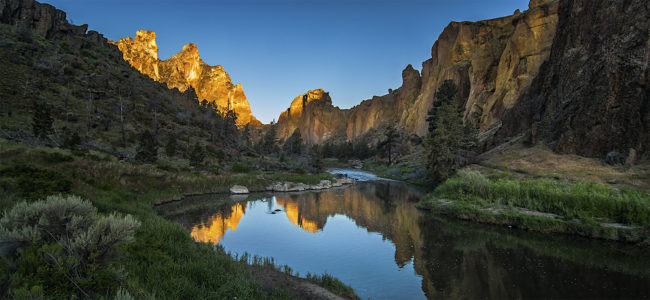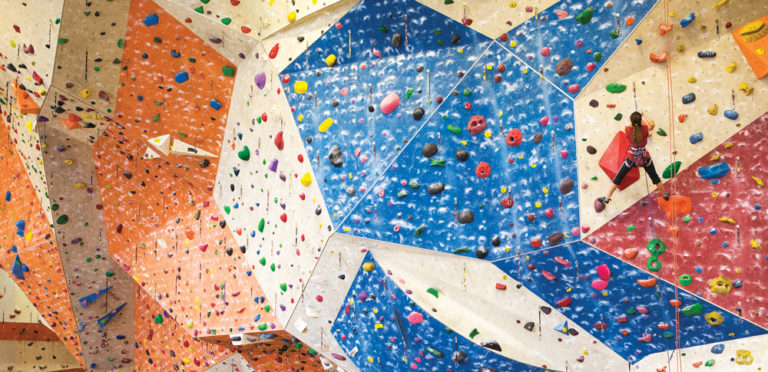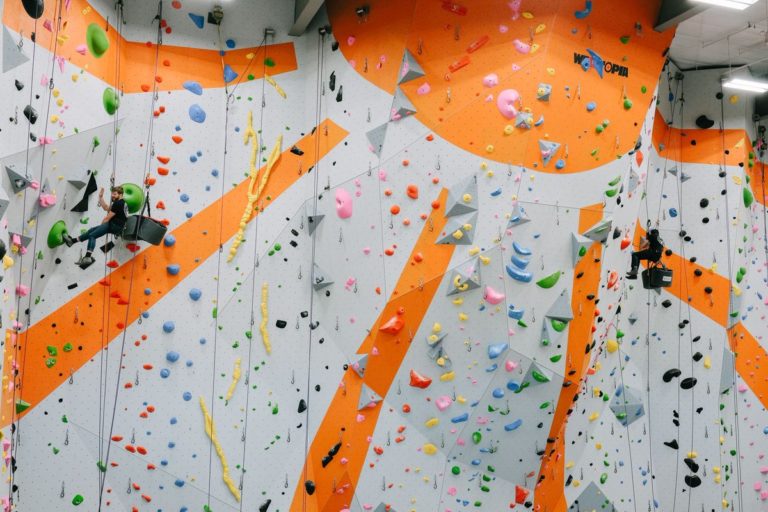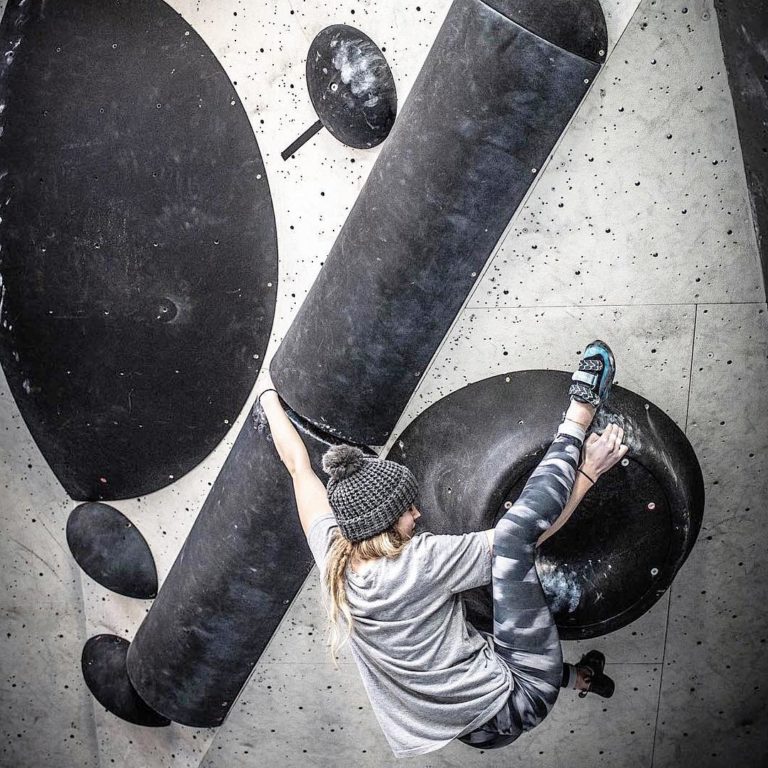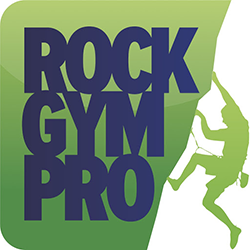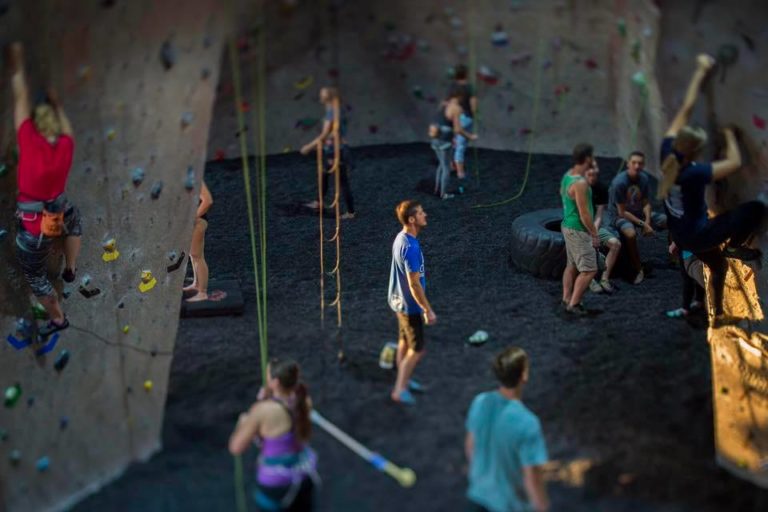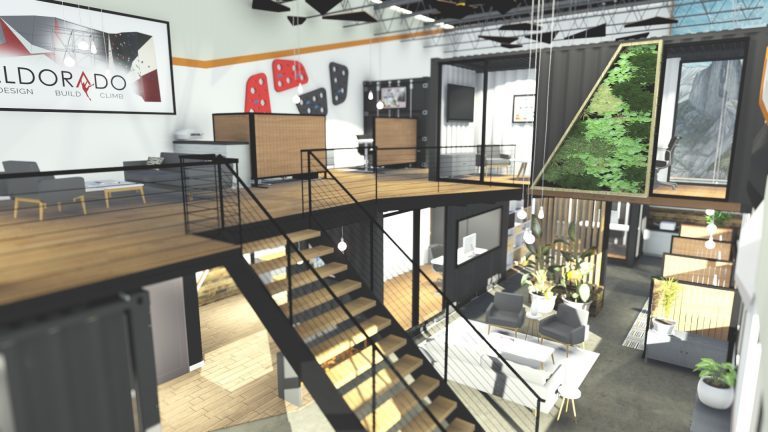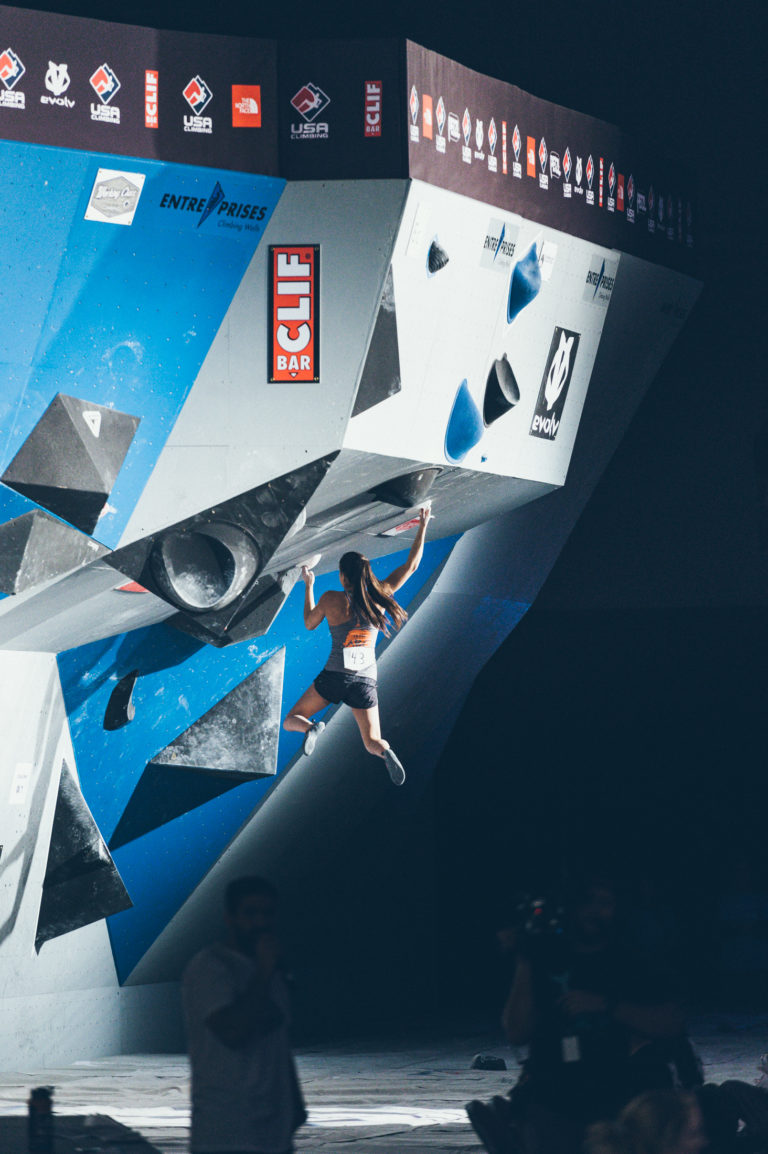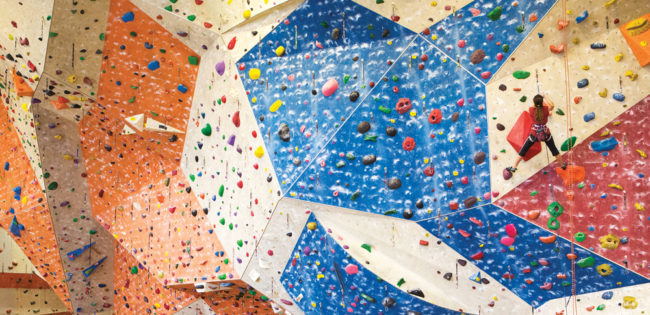
Building a Website For Your Climbing Gym

Climb Hires New COO
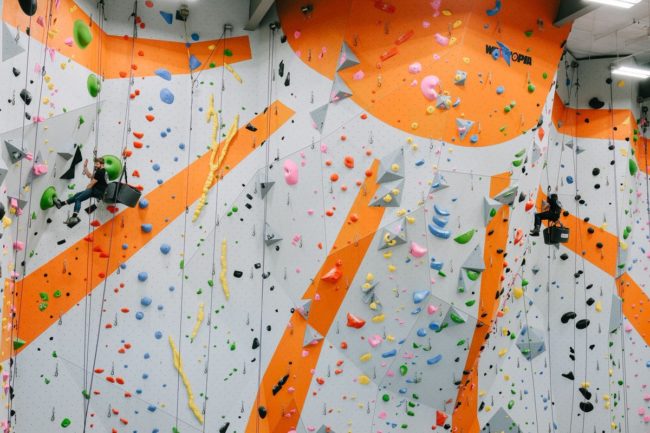
Climbing Proposed for 2024 Olympics
 During a press conference in Paris, France, the Paris Organising Committee of the Olympic & Paralympic Games (Paris 2024) confirmed a proposal to include four additional sports in the Sports Programme of the 33rd Summer Olympic Games: Breakdance, Skateboarding, Surfing and Sport Climbing.
The proposal will next be presented to the IOC Executive Board on March 26th-28th. If accepted, the proposal will then be put forward to the 134th IOC Session on 24th June in Lausanne, Switzerland. If approved, Sport Climbing will be featured in the Summer Olympic Games for the second consecutive edition. “It is again a great day: our climb goes on, and new challenges are taking shape beyond Tokyo. We are happy to see that Paris 2024 is supporting the new wave, which is strengthening the Olympic movement. We are grateful for the proposal’s recognition of the value of Sport Climbing and the work the IFSC has done. We are proud to be part of this process and we look forward to the next steps in the following months,” says Marco Scolaris, President of the IFSC.
In 2016, Sport Climbing was added to the upcoming Olympic Games in Tokyo and most recent Youth Olympic Games in Buenos Aires, where Sport Climbing made its Olympic debut.
Additionally, Paris 2024 plans to enrich the Sport Climbing event in 2024 by expanding from one to two distinct competitions, six to twelve medals and 40 to 72 athletes in total. Under the proposal, 16 women and 16 men would compete for six medals in the Speed discipline; 20 women and 20 men would compete for six medals based on the combination of results in the
Bouldering and Lead disciplines.
During a press conference in Paris, France, the Paris Organising Committee of the Olympic & Paralympic Games (Paris 2024) confirmed a proposal to include four additional sports in the Sports Programme of the 33rd Summer Olympic Games: Breakdance, Skateboarding, Surfing and Sport Climbing.
The proposal will next be presented to the IOC Executive Board on March 26th-28th. If accepted, the proposal will then be put forward to the 134th IOC Session on 24th June in Lausanne, Switzerland. If approved, Sport Climbing will be featured in the Summer Olympic Games for the second consecutive edition. “It is again a great day: our climb goes on, and new challenges are taking shape beyond Tokyo. We are happy to see that Paris 2024 is supporting the new wave, which is strengthening the Olympic movement. We are grateful for the proposal’s recognition of the value of Sport Climbing and the work the IFSC has done. We are proud to be part of this process and we look forward to the next steps in the following months,” says Marco Scolaris, President of the IFSC.
In 2016, Sport Climbing was added to the upcoming Olympic Games in Tokyo and most recent Youth Olympic Games in Buenos Aires, where Sport Climbing made its Olympic debut.
Additionally, Paris 2024 plans to enrich the Sport Climbing event in 2024 by expanding from one to two distinct competitions, six to twelve medals and 40 to 72 athletes in total. Under the proposal, 16 women and 16 men would compete for six medals in the Speed discipline; 20 women and 20 men would compete for six medals based on the combination of results in the
Bouldering and Lead disciplines. New Shapes, New Movement by Premium Holds
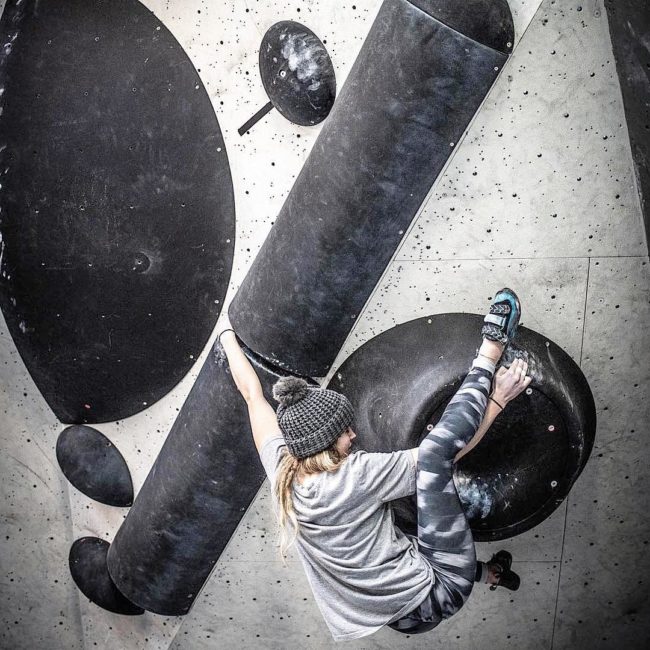
Fiberglass Volumes: Bigger, Lighter, More Dynamic
The newest thing in climbing gyms—besides coffee shops, yoga classes, and cross-fit style training programs—is utilizing large fiberglass volumes in route setting. These shapes can be the size of a coffee table, but since they are constructed from fiberglass, are remarkably lightweight for the size. Fiberglass as a medium allows for rounder shapes that cannot be achieved with wood volumes, and this roundness promotes open-handed interaction with the holds and results in moves that require precise balance and body-tension. “Imagine a basketball sliced in half across the equator and mounted on a wall,” said Chris LoCrasto, describing some of the volumes available from the European hold manufacturer 360, which produces the largest shapes on the market. LoCrasto, along with Kyle Clinkscales and Stan Borodyansky, owns and runs the Texas-based Summit Gyms, and now the three also co-own Premium Holds, a new company that imports European holds for an American market. Unlike other climbing holds, volumes can change the angle and shape of the wall in drastic ways that make the terrain feel fresh and new. For a route setter, this opens up a new world of possibilities. The movement on routes with volumes is not necessarily more difficult than standard climbing, but can be much harder to execute on the first try. These holds can also force more dynamic and gymnastic movements than would be made on more standard incut holds.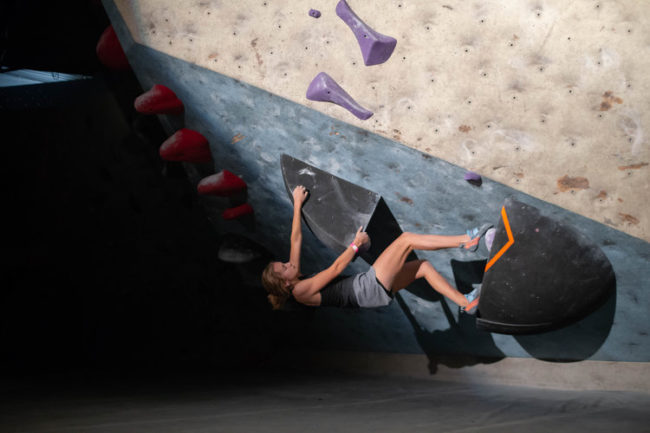
Climbing Comps: How to Keep Things Interesting?
In climbing competitions, one of the biggest recurring challenges is figuring out how to set routes that continue to challenge elite-level competitors without becoming repetitive or predictable. Now that climbing will make its debut in the Olympics, there is also a desire to make climbing more audience-friendly. To attract viewers, climbing competitions need to be a little more showy and simultaneously be easy for an onlooker to decipher who is winning. The typical setting style was no longer meeting these needs. Enter fiberglass volumes. Now it is common to watch a competition where climbers are making huge leaps between holds, balancing precariously on shapes with no visible incut, and contorting themselves between shapes, sometimes with their backs facing the wall or toes wrapped around the edge of a large shape. Climbing comps are becoming a little more like parkour. Routesetters refer to this style of climbing as higher risk: the climbs involve more coordination and more learning in order to be able to successfully complete them. This type of movement is very difficult to create with small holds, but volumes encourage it. The International Federation of Sport Climbing (IFSC), which is the organization responsible for World Cup competitions, has specified guidelines for route setters. For bouldering competitions setters must use at least 500 different holds, half of them need to be micro-sized, and 30 should be volumes of different sizes. For lead climbing, the number of holds is doubled to at least 1000, but they are still required to use 30 volumes. This requirement shows that being able to climb well on volumes is necessary for anyone hoping to place well in international competitions.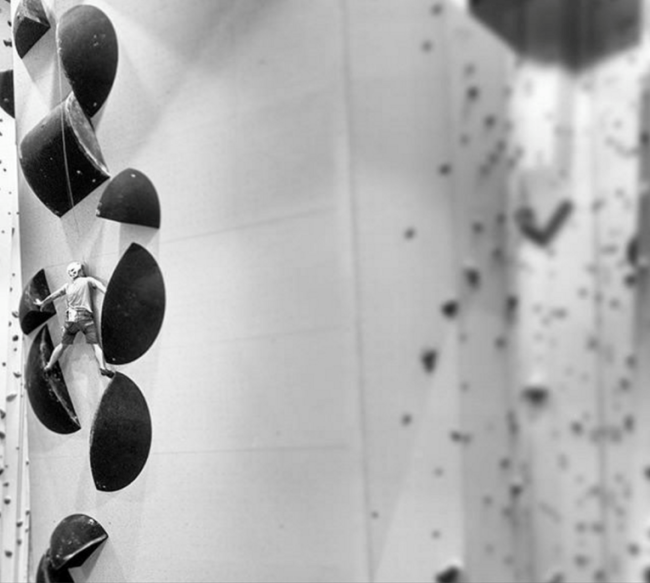
World Cup Climbing Comes to Gyms
But what about every day gym climbers? The evolution of competition climbing has begun to trickle into gyms around the country. Routesetters are hungry for something new and different, and climbers themselves are becoming familiar with more creative and dynamic movement. “If you are an outdoor climber and all you want to do is come to a gym to get fit, well, every gym offers that,” said LoCrasto. “We want to create something that isn’t in every climbing gym.” Some gyms are experimenting with different setting styles in different areas of their gyms to provide customers with options. Movement RiNo, outside Denver, is one such gym. There is a traverse wall, a training area, and boulders with more basic routesetting that allow for top-outs. Along the perimeter is the World Cup Wall. “In this area we have the opportunity to set problems in a style that is more competition-oriented. Most of the time when people hear that, they’re like, ‘Oh so there is only really hard competition problems,’ but that’s not what we’ve done. We set moves that are a little more complex, a little more technical, and we have done so through the entire difficulty range, all the way from beginner to elite World Cup level competitor,” says Ryan Sewell, the head route setter for Movement Gyms. Ryan thinks having these different styles available in one space allows climbers visiting his gym to have a richer experience. “A climber on the traverse wall can look over and see somebody else trying a really cool competition-style coordination jump and walk over there and try that with them. People are more likely to have that chance encounter, and go try something that maybe they otherwise wouldn’t.”Premium Holds Brings European Volumes to the US
The rise in popularity of volumes has revealed a weakness in the American market: there is a lack of fiberglass brands in the United States. The owners of Summit Gyms in the Dallas-Forth Worth area realized there was room for this market at a route-setting workshop with Simon Margon, a Slovenian IFSC route setter who also owns the hold company 360. “The holds he brought to us were so different from anything in the US market, it was shocking that these weren’t more commonplace,” LoCrasto said. “I’ve been route-setting for about 15 years, and it was evident that there was something different and special about these holds.” Without much knowledge about distribution or shipping logistics, LoCrasto and his business partners began importing and selling holds from 360. After about six months, several other European companies that wanted to break into the US market reached out to them. Now Premium Holds distributes for four different hold companies, each of which offers something different: 360 produces polyurethane and fiberglass holds, including very large fiberglass volumes; Simpl makes dual tex wood volumes; Squadra produces polyurethane and fiberglass holds and wood volumes; and Cheeta makes wood volumes plus holds from polyurethane and fiberglass, and nearly every one of Cheeta’s shapes features dual tex. Dual tex is a surface that has two different textures, rough in places and smooth and slippery others, so that foot holds are trickier and thumb catches nonexistent. The shapers from each of these hold companies are experienced IFSC route setters— Margon owns and shapes for 360 and Simpl, Reini Fichtinger owns and shapes for Squadra, and the legendary Laurent Laporte, who is the longest tenured IFSC setter, owns and shapes for Cheeta. These setters have developed their shapes out of necessity or to achieve a desired result when outfitting for a competition. “I had all these setting ideas and I realized that the holds I needed didn’t exist. So I made them,” said Margon of his signature large volumes. This results in a different style than the commercial shapes available in the US. In general, American companies make predominantly incut holds, whereas European companies make more rounded shapes with less incut. By bringing holds that foster a different style of climbing to American gyms, American climbers are being exposed to new and exciting movement. “At the end of the day, climbing is fun. Setting routes with volumes offers something new and fun to do,” LoCrasto notes. “You don’t come into a gym and just see fruity pebbles on the wall anymore.”Oregon Bouldering Gym At Stake
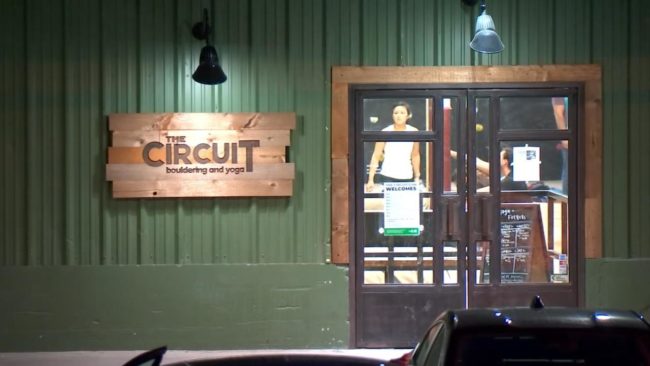
The Circuit Bouldering Gym in Tigard may be at stake because of a transportation project, with a proposed Light Rail line that could run right through its building according to KPTV.
The alternative route TriMet proposed at the beginning of the year puts The Circuit in the crosshairs of construction.
“Literally they would take our business and tear it down to make way for the rail,” said Danny Burkhead, the general manager of The Circuit.
The Circuit operates three bouldering gyms in the Portland, Oregon metro area and the people at The Circuit in Tigard are fearful they’ll lose all the hard work that’s been put into the location, including the community they’ve built.
TriMet says affected business owners would be paired with a relocation specialist, helping them to find what’s on the market and what would fit their needs. They’d also cover moving expenses, according to Jennifer Koozer, TriMet’s community affairs manager.
The entire MAX line will be finalized in May, according to TriMet, but construction might not even start for four more years.
RGP: Software Powering the Industry

Rock Gym Pro: Who We Are
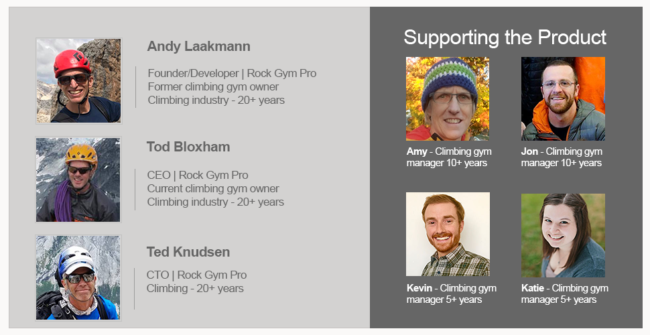
Top 10 Things Successful Gyms Need From Their Management Software
- Robust Waiver/Document Management The signing of waivers and the secure storage of legal documents are critical components to running a climbing business. Make sure whoever built your waiver solution knows what they’re doing.RGP provides…both a free, seamlessly integrated Smartwaiver solution as well as an integrated RGP document system. Smartwaiver is the leading digital waiver service (and sister company of RGP) trusted by thousands of organizations and has been legally tested for 7+ years with over 50+ million legal, digital documents signed. RGP + Smartwaiver’s integrated document system can seamlessly handle all of your liability waivers, orientation forms, belay checks, and even membership contracts.
- Comprehensive Member Management Features Gyms need a powerful, flexible and automated system to administer the often complicated tasks of member management. It’s not enough to simply bill your members each month – your staff need the right tools to deliver excellent customer service to your members.RGP provides…everything a climbing facility needs to manage members, including: handling of the member payment lifecycle, failed payment notification, freeze/thaw options, kiosk and online membership sales, integrated membership contracts, member portals that give members the ability to self manage their own membership and iOS/Android app for member check-ins.
- Day User Management A large part of a gym’s revenue comes from drop-in, day users. Members are important – but so are day users! You need a flexible system that can handle your day user workflows just as well as it handles member management workflows.RGP provides…an easy to use set of tools for quickly getting your day users in the gym efficiently, including the integrated waiver.document system and POS functions that do not require clumsy and sluggish logins from your day users.
- Staff Accountability There’s a lot going on at your gym all the time. When multiple employees are performing multiple actions in the software – usually while sharing workstations, you need to know who did what and when.RGP provides…staff PINS which can be assigned to each staff member using RGP. If there’s ever an issue you want to investigate, the Admin can create an audit log that shows things like; which items in RGP were deleted, when the cash drawer was opened, when payments were voided and who performed the action. Every staff action is tracked, and even if staff share a workstation at a busy front desk, individual tasks will be logged under their name.
- Easy Ways to Manage Classes, Groups, and Events It can get overwhelming trying to keep track of all of the classes, groups and events like birthday parties that are offered at your gym. You need a way to easily keep track of it all.RGP provides…a comprehensive calendar and booking system that allows you to build complex recurring schedules and prices, assign staff and resources to specific events, sell online gift cards, create and manage individual events and allow customers to book it all online with just a few clicks.
- Retail Capabilities If you’re selling retail items at your facility, you need a POS system that is quick, reliable and scalable.RGP provides…a powerful POS and inventory management system that gyms of any size can use – from a small retail shop to the largest retail climbing gym environments.
- Reporting and Accounting It’s your gym – you need to know what’s going on with the numbers.RGP provides… hundreds of reports/charts and powerful customer queries for segmenting your customers. On the accounting side, RGP is seamlessly integrated with both QuickBooks Online and QuickBooks Desktop making it super simple to get the books in order.
- Easy Online Sales You need to keep the online booking and sales process easy for your customers – eliminating any unnecessary barriers. Your customers shouldn’t have to leave your website to book online.RGP provides…the ability for your customers to book classes and purchase memberships without having to create an online account and without having to leave your website. Keeping it simple and keeping it all within your brand.
- Deployment Options Each climbing facility is unique. You need software that is flexible enough to accommodate your specific needs.RGP provides…TWO deployment options. You can use either the installed version of RGP OR RGP Cloud. With RGP Cloud you get the speed of installed software with the convenience of accessing your data and files in the cloud.
- Dedicated and Knowledgeable Staff You need people on your side that know what they’re talking about – not just about software, but about any operational challenges you’ll face at your gym too. You want people who can relate to what your employees face every day.RGP provides…support from experienced folks. Everyone at RGP that supports the product has either owned or worked in a climbing gym. We actually get it!
California Coast Gym Closes
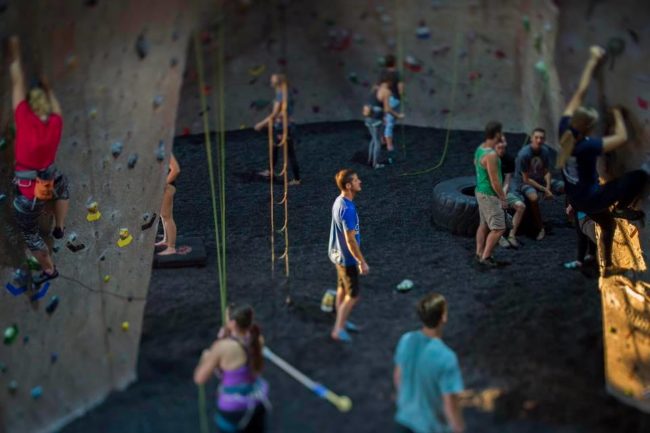
Eldo Moves Headquarters
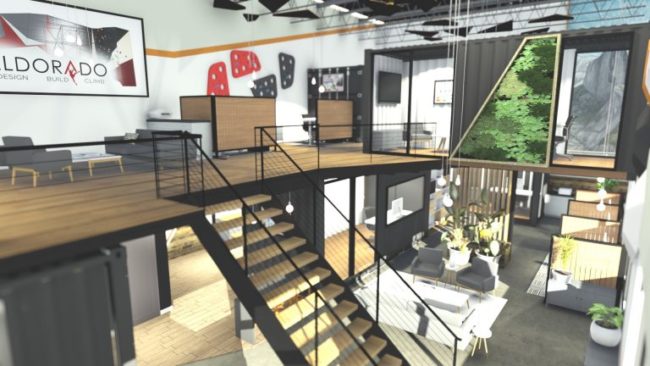
New Corp Identity for Ohio Gym
 The team behind a central Ohio collection of climbing gyms has plans for additional expansion. To keep pace with their growth, they have decided to adopt a new corporate name to grow under, 5.Life.
Columbus-based Vertical Adventures first opened its doors in 1994 when Carrie and Alexis Roccos saw the need for an indoor climbing space for the vibrant midwestern climbing community. Finding a location near the Budweiser brewery, they got to work crafting and creating their own climbing walls and perfecting a climbing gym that has become their family.
In 2014, Vertical Adventures opened a 16,000 square foot space with 44-foot walls, 100+ roped routes, a full fitness gym, two bouldering areas, and a full retail area. The facility is focused on helping customers take their fitness to new heights and includes a full yoga schedule, adult programming, monthly events, and more.
2015 saw the transformation of the original space into the Training Center focused on youth programming and development. From pre-schoolers just learning to grab onto holds all the way to national-level competitive athletes, the experienced coaches at this facility work with kids to help build confidence and problem-solving skills both on and off the wall.
In 2018, the team took the sport into the city by opening a bouldering-only facility, Chambers in Grandview.
The new name pulls meaning from the Yosemite Decimal System. The 5 means the terrain is a rock climb and Life implies climbing as a life-long venture. The company hopes to continue to bring adventure, fun, community, and so much more to the new spaces they open in the Midwest. In the 25 years they have been in Columbus, OH they have already transformed the lives of so many.
The team behind a central Ohio collection of climbing gyms has plans for additional expansion. To keep pace with their growth, they have decided to adopt a new corporate name to grow under, 5.Life.
Columbus-based Vertical Adventures first opened its doors in 1994 when Carrie and Alexis Roccos saw the need for an indoor climbing space for the vibrant midwestern climbing community. Finding a location near the Budweiser brewery, they got to work crafting and creating their own climbing walls and perfecting a climbing gym that has become their family.
In 2014, Vertical Adventures opened a 16,000 square foot space with 44-foot walls, 100+ roped routes, a full fitness gym, two bouldering areas, and a full retail area. The facility is focused on helping customers take their fitness to new heights and includes a full yoga schedule, adult programming, monthly events, and more.
2015 saw the transformation of the original space into the Training Center focused on youth programming and development. From pre-schoolers just learning to grab onto holds all the way to national-level competitive athletes, the experienced coaches at this facility work with kids to help build confidence and problem-solving skills both on and off the wall.
In 2018, the team took the sport into the city by opening a bouldering-only facility, Chambers in Grandview.
The new name pulls meaning from the Yosemite Decimal System. The 5 means the terrain is a rock climb and Life implies climbing as a life-long venture. The company hopes to continue to bring adventure, fun, community, and so much more to the new spaces they open in the Midwest. In the 25 years they have been in Columbus, OH they have already transformed the lives of so many. Nationals Comes to Bend, Home of Entre-Prises

The Birthplace of Sport Climbing
Smith Rock State Park, which lies a little over half an hour north of Bend, does seem to be the location of several climbing firsts in the United States. Climbing began in that region the 1950s, when small teams began climbing the pinnacles along the Crooked River, protecting themselves with pitons and other traditional gear. These groups were focused on summits and often placed registers with signatures of the first ascensionists atop the towers that they climbed. In 1960, the state of Oregon designated 650 acres as Smith Rock State Park in order to protect its significant geologic features and to provide a place for recreation, paving the way for continued climbing in that region. By the late 1970s, a young climber named Chris Jones began to bring bouldering to Smith. A sport already popular in Great Britan, bouldering was mostly foreign to the US. Through his focus on difficult, dynamic moves on smaller rocks, Jones established many problems and popularized bouldering as a sport unto itself rather than just a way to practice for larger peaks. Then in 1982, a 21-year-old climber by the name of Alan Watts wearied of climbing the known routes at Smith, and rappelled down faces to scope new route potential. He realized that there were enough holds on the faces to make climbing possible, but traditional protection wouldn’t work. So he began drilling protection bolts into the rock while on rappel. Watt’s climb of the bolted 5.12 route Chain Reaction is believed to be the first sport climb on record, and Watts is credited with bringing sport climbing to the USA. This new method did not come without controversy. Die-hard traditionalist climbers disparaged Watt’s new technique, claiming that it was cheating and recognizing that it damaged the stone. Today, though, sport climbing is a well-accepted and much loved genre of climbing. Now, Smith Rock, with nearly 1000 climbing routes, over 60% of which are sport climbing routes, is a popular climbing destination for Bend locals and visitors alike. Close proximity to such a historic and popular area is why numerous climbing-related businesses have made their homes in Bend. “The reason Entre-prises USA started in Bend was because the very guys developing Smith also started the company. We’re not in Bend because it is this logistical hub where it is really easy to fly in and out of or to ship goods out of, it’s because of our roots. And we are really proud to have been in Bend for 30 years,” said Sander Culliton, CEO of Entre-prises USA.